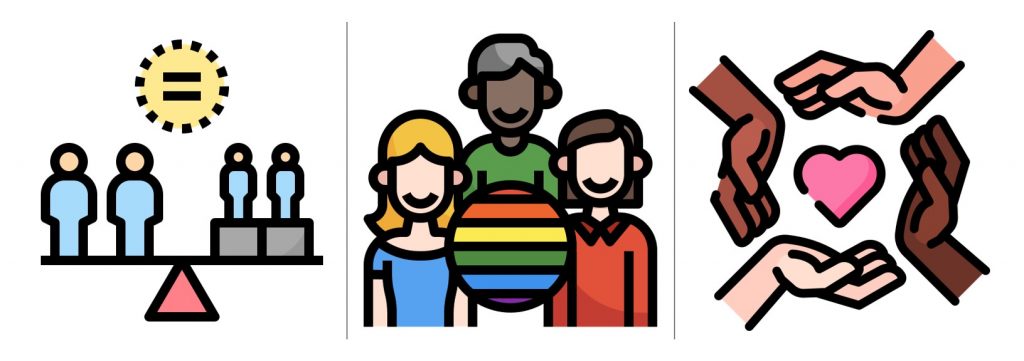Module 4: Equity, Diversity, and Inclusion (EDI)
Authors: Heather Carroll, Nipissing University; Sarah Driessens, Nipissing University; Marinette Fargo, University of Guelph; Kylie Hamilton, St. Clair College; Lindita Prendi, St. Clair College; Christine Zaza, University of Waterloo

What words come to mind when you think of “equity”, “diversity” and “inclusion”? What do they mean to you as an educator? Are these concepts that you think about when you plan a course? How about when teaching a course? Do you consider how your unconscious bias influences or shapes the way you design and teach a course and how you interact with learners?
We will address these questions and explain how Universal Design for Learning (UDL) is used to foster equity, diversity, and inclusion in the design and delivery of instruction. Specifically, this module addresses three topics related to EDI:
- What is EDI?
- Positionality & Intersectionality
- Uncovering unconscious bias
Learning Outcomes
Upon successful completion of this module, you should be able to:
- Define EDI and its application in post-secondary learning environments
- Reflect on how your position and intersectional identities influence your work in higher education learning environment
- Describe the importance of recognizing unconscious bias
- Identify strategies to incorporate EDI in instruction
Learning Activities and Assessments
- Reflect questions throughout the module
- Application activity
Time Commitment
Approximately 120 minutes

